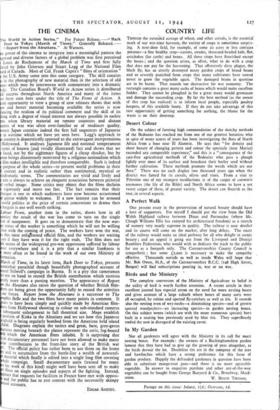COUNTRY LIFE
ing. A next-door field, for example, of some 20 acres or less contains potatoes—a fine healthy crop—carrots, swedes, thousand-headed kale, flax, artichokes (for cattle) and beans. All these crops have flourished except the beans ; and the question arises, as often, what to do with a crop that does not pay for the harvesting. That offensively dirty plague, the black fly, has so utterly destroyed many garden crops of broad beans and so severely punished farm crops that many cultivators have vowed never to grow the vegetable again. The damaged beans in question are to be burnt. That sounds too destructive for war economy. The rectangle contains a great many sacks of beans which would make excellent fodder. They cannot be ploughed in for a great many would germinate and damage the succeeding crop. By far the best method (as the owner of this crop has realised) is to inform local people, especially poultry keepers, of this available booty. If they do not take advantage of this rare opportunity of getting something for nothing, the blame for the waste is on their doorstep.


























 Previous page
Previous page